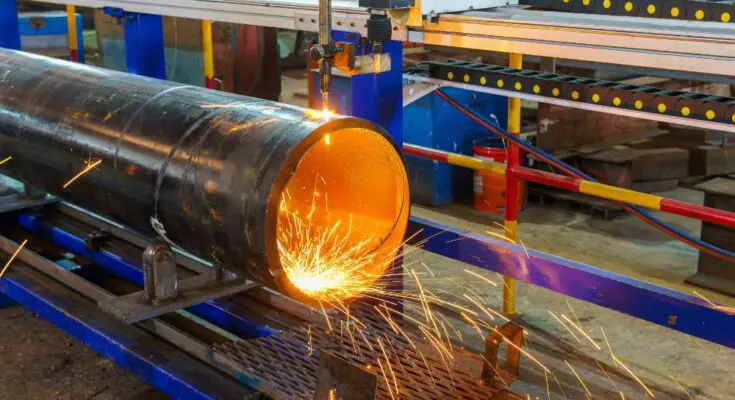Beveling tools are invaluable in the metalworking and fabrication industries. They allow professionals to create precise, angled edges on metal pieces. These tools not only improve a piece’s aesthetic finish but also enhance its structural integrity by preparing it for welding or fitting. Despite their benefits, beveling tools have risks requiring strict adherence to safety standards.
Let’s look at four important safety tips for using beveling tools and preventing accidents.
Wear Appropriate Personal Protective Equipment (PPE)
Beveling tools involve high-speed rotating blades, producing sparks and debris that could cause harm. Always wear proper personal protective equipment (PPE) when using beveling tools, including safety glasses, earplugs or earmuffs, gloves, and a full-face shield. You should wear the face shield with the safety glasses, as it provides a barrier against flying debris from all angles. Wearing PPE protects your eyes and ears and prevents burns and cuts from sharp metal pieces.
Inspect Tools Before Use
Before using any beveling tool, you should inspect it for damage or defects. Check the blades for chips, cracks, or signs of wear and tear. Ensure that all guards and safety features are in place and functioning correctly. If you notice any issues with the tool, don’t use it until you’ve properly repaired or replaced it.
Follow Proper Handling Procedures
You should always use beveling tools carefully to prevent accidents. Hold the tool firmly and avoid reaching over the rotating blades. Never attempt to adjust or change the tool’s settings while it’s still running, and always switch off the power before making any adjustments. When changing blades, follow the manufacturer’s instructions and use appropriate tools to avoid injury.
Keep Your Work Area Clean and Organized
A cluttered work area can increase the risk of accidents when using beveling tools. Before beginning any work, ensure your workspace is clean and free of obstructions. This step includes removing loose metal pieces, debris, or tools from the area. Keep the tool’s power cord away from sharp edges or sources of heat to prevent damage. Taking a few minutes to organize your work area can go a long way in ensuring your safety when using beveling tools.
While beveling tools are essential for achieving precision and quality in metalworking and fabrication, you can’t overlook their safe use. There are many things to consider when choosing beveling tools, but you should never compromise on safety. Always wear appropriate PPE, inspect tools before use, handle them carefully, and keep your work area clean and organized. Following these safety tips can prevent accidents and ensure a successful beveling process every time.



